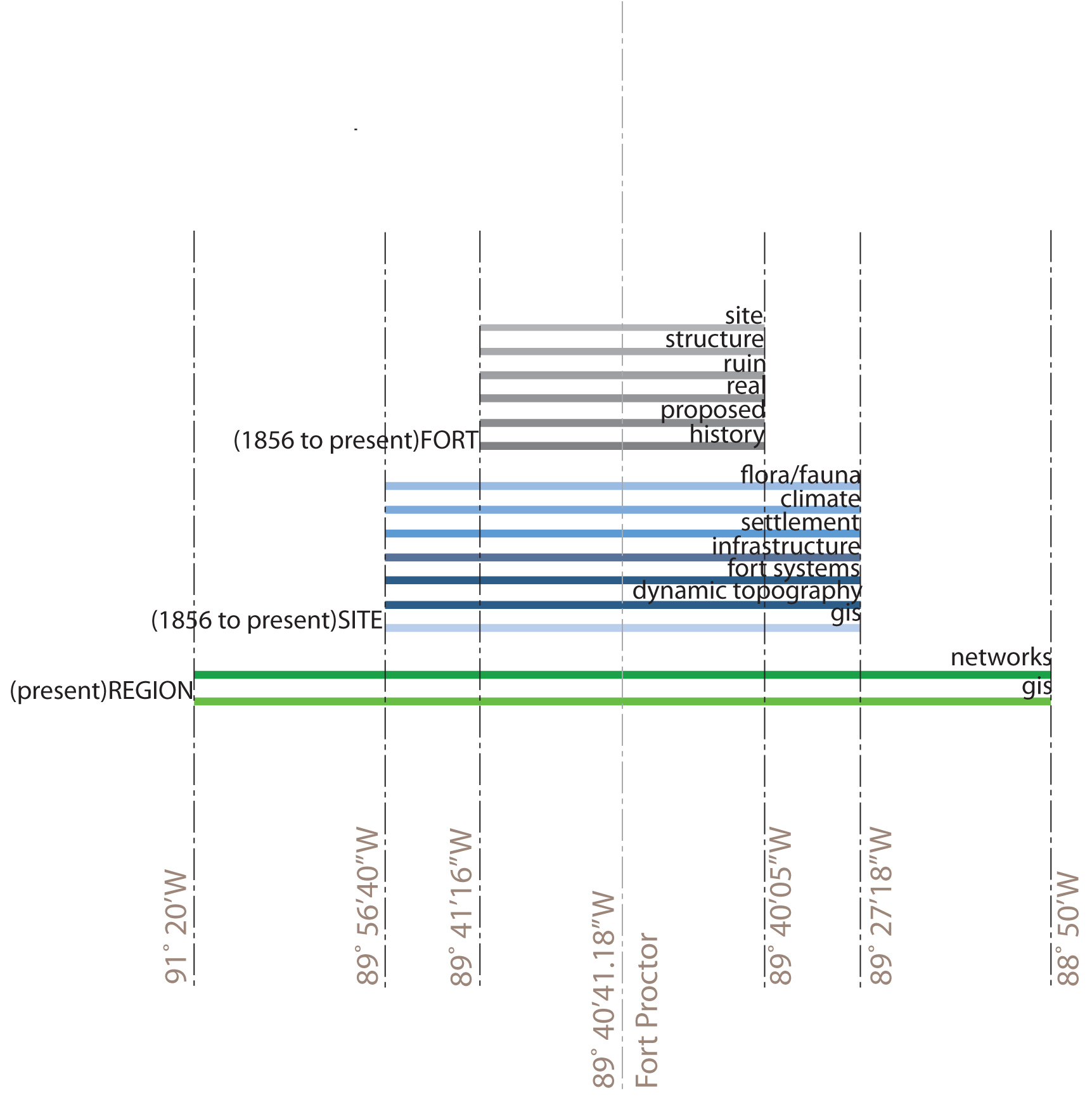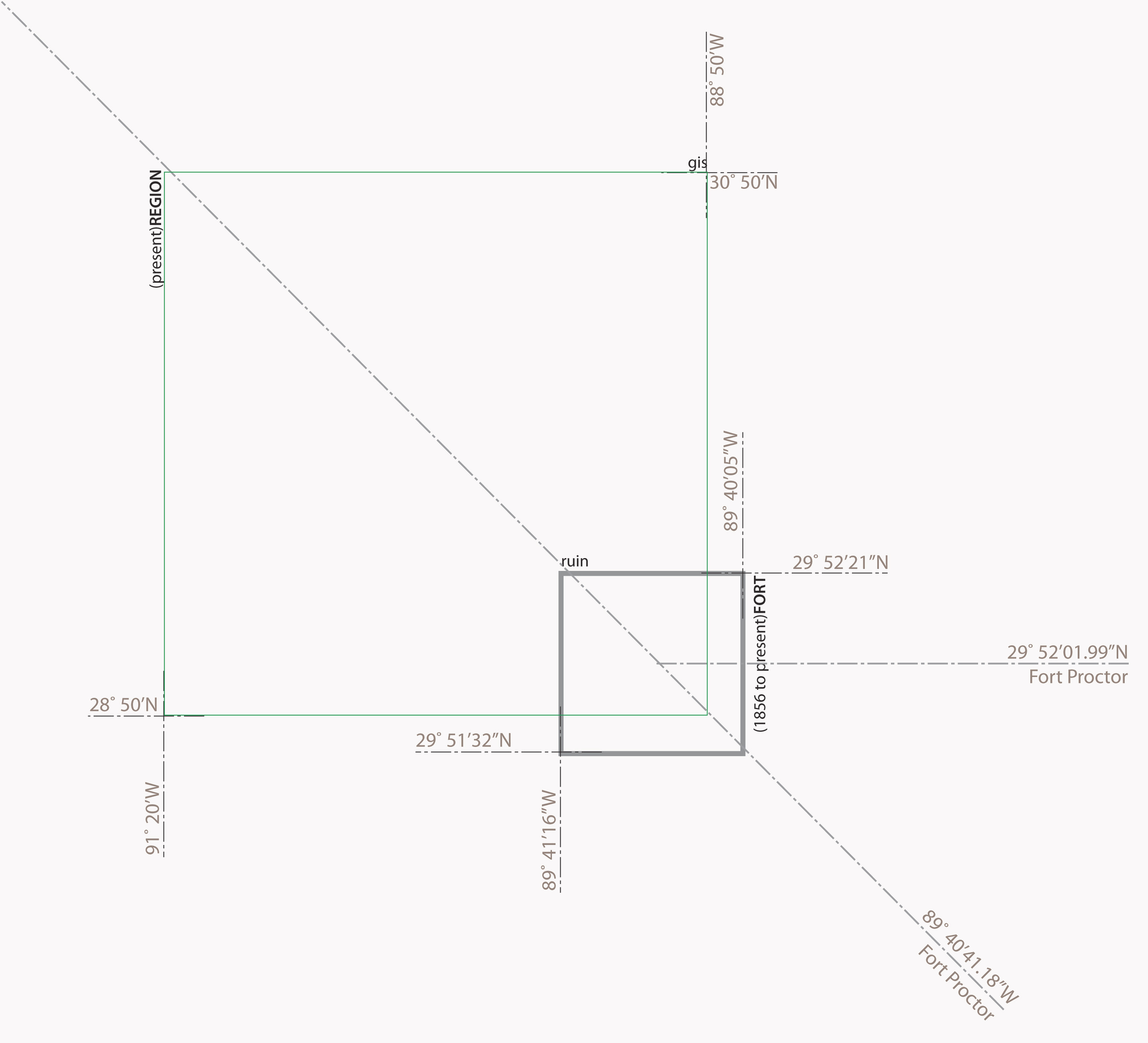A Conditional Preservation_Case Study 1
Fort Proctor, Lake Borgne, Louisiana
2013 Best Research Paper, Architectural Research Consortium
1st Place, Peterson Prize Competition, Historic Building Survey, NPS
The preservation and sustainability of building cultural heritage in indeterminate landscapes and sites at extreme environmental risk raises several questions regarding methodology.
1. What are the priorities for preservation of built works where degradation is accelerated by global environmental shifts?
2. What does one preserve of past cultures when the physical ground it once occupied is gone?
3. What are the methods for Historic Preservation when to preserve means much more than stabilizing a built project in time but also includes the preservation/sustenance of the land, the environment, and the cultural relevance?
4. If one cannot physically preserve does that mean its presence and cultural significance is nullified?
To investigate these questions, the research team selected Fort Proctor, a NHRP site at extreme environmental risk. Fort Proctor is one of several forts built along Lake Borgne in Southeastern Louisiana following the War of 1812. Since then, Fort Proctor has remained in a fluctuating landscape as a static marker or datum, recording major ecological changes within the dynamic coastal environment. To understand the structure’s deconstruction and degradation as well as the changing Gulf of Mexico ecologies, a rich historical context was assembled from a complex array of disparate datasets (physical site and geographical condition surveys, material analyses, photogrammetric and photographic documentation, and GIS mapping.) From the data, the researchers developed time-based animations that explore the test site in four time-scales; one day, one year, 200 years, and geologic time. The animations present perspectival visualizations that illustrate the aesthetic and atmospheric qualities for each scale while overlaying analytical data and historical facts. They create a composite temporal framework allowing the viewer to digest the disparate datasets as single narratives. These animations and the procedure for their composition present a new preservation methodology for sites where physical preservation is prohibitive and loss unavoidable: “the conditional preservation.”




















